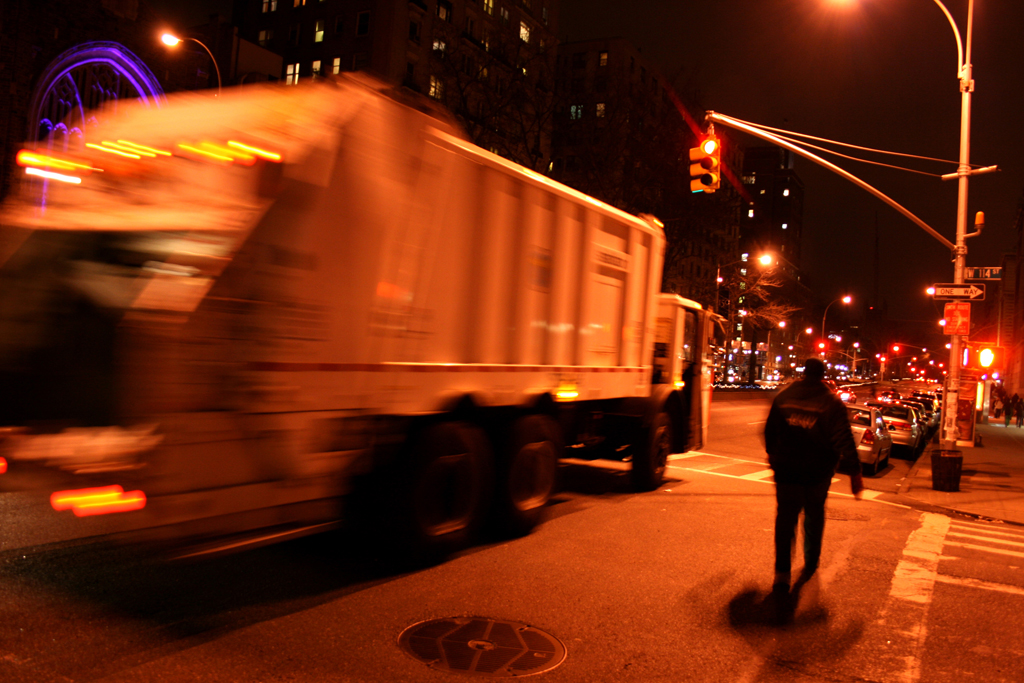City of Systems
A suite of short videos intended to offer a poetic peek behind the scenes of some of the complex systems that enable New York City to function.
We are celebrating 15 years — and counting — of stories that are deeply researched and deeply felt, that build a historical record of what the city has been.
Charged with the efficient management of solid waste, New York City’s Department of Sanitation operates 59 district garages and manages a fleet of 2,022 rear-loading collection trucks and 450 mechanical brooms. Each week, approximately 64,000 tons of household and institutional waste are collected. In 2009, the average truck collected 9.9 tons of refuse and 5.6 tons of recyclables per shift. But public awareness of what happens to that trash once it leaves the curb is limited. So, to shed some light on the journey from trashcan to landfill — past, present and future — we talked with Elizabeth Royte, author of the 2005 book Garbage Land, who offers a snapshot of how New Yorkers have treated their trash from the 18th century onwards. In the video below, she describes how her research into where exactly her trash was going after she threw it out has led her to become a more ecological citizen, with “a systems view” of our interconnected processes of manufacturing, transportation, disposal and re-use.
The immense distances trash travels (and the amount of cost and energy used to transport, transfer, recycle, incinerate or dump it) pose obvious questions about how we expend environmental resources in support of our country’s vast consumption practices. According to Rit Aggarwala, former director of the Mayor’s Office of Long-Term Planning and Sustainability, it’s time to shift the ways we measure environmental impacts “from combustion towards consumption.” He was speaking at a conference of city planning professionals entitled Zoning the City, but the implications of his words extend far beyond land use: he was expressing the far-reaching truth that there’s more than just carbon in our footprints. And while engines and energy usage are the primary metrics used to calculate degrees of green, zooming out to a broader inquiry into the infrastructure that supports both the supply chain and the removal chain raises larger questions about the life-cycles of the products and materials that pass through our daily lives.
To be sure, sensors and analytics can help us make more intelligent choices about how we use resources, but as we go about enhancing or improving complex urban systems through technology, we must also provoke discussion about what kind of city we want. What are the values that should guide our quest for efficiency, reliability and convenience in the technologies that support the urban environment? And how can those values be informed by careful consideration of those infrastructures that may be out of sight, but should never be — if we want ecological, economical and resilient cities — out of mind. –C.S.
This Urban Omnibus video is the fourth and final in a series called City of Systems, a suite of short videos intended to offer a poetic peek behind the scenes of some of the complex systems that enable New York City to function. This video series is made possible by IBM as part of its commitment to use technology and information to help build more sustainable and intelligent cities.
The views expressed here are those of the authors only and do not reflect the position of The Architectural League of New York.
A suite of short videos intended to offer a poetic peek behind the scenes of some of the complex systems that enable New York City to function.


Comments